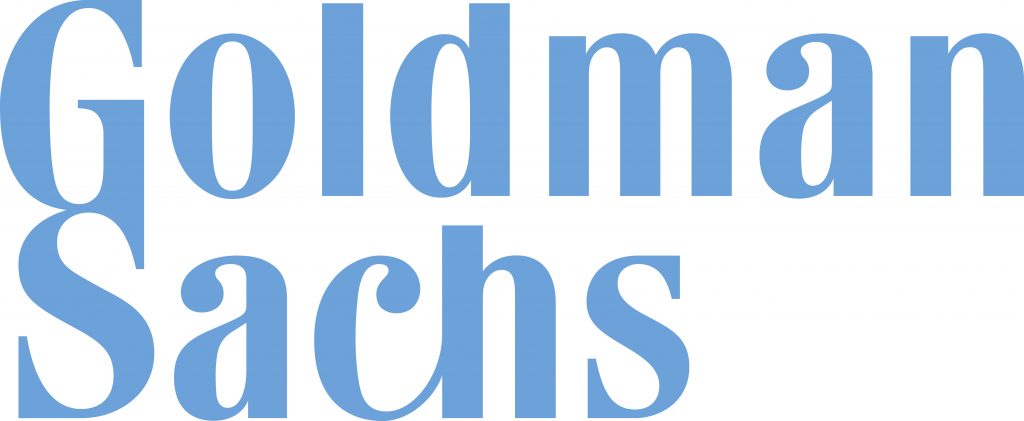This post is about how Goldman Sachs makes money. Firstly, we explain the key elements of Goldman Sachs business model. Then, we provide information on Goldman Sachs key business segments, their revenues, and their revenue share for FY 2014 (fiscal year ending December 31, 2014). Finally, we share the revenues, the profits, and the profit margins of Goldman Sachs for FY 2014.
About Goldman Sachs
The Goldman Sachs Group Inc. (“GS”) is a leading global investment banking, securities and investment management firm that provides a wide range of financial services to a substantial and diversified client base that includes corporations, financial institutions, governments, and high-net-worth individuals. Goldman Sachs was founded in 1869. The firm is named after its founders, Marcus Goldman and Samuel Sachs.

Key Elements Of Goldman Sachs Business Model
Goldman Sachs acts as a financial intermediary between the entities that need to raise money and the entities that have money to invest. The entities can be corporations, financial institutions, investment funds, governments, and high net-worth (HNI) individuals.
For entities that need to raise money, Goldman Sachs offers:
- Equity Underwriting. The firm underwrite common and preferred stock and convertible and exchangeable securities.
- Debt Underwriting. The firm underwrite and originate various types of debt instruments, including investment-grade and high-yield debt, bank loans and bridge loans, and emerging- and growth-market debt, which may be issued by corporate, sovereign, municipal and agency issuers.
- Investing and Lending. The firm invests directly in publicly and privately traded securities and originates loans.
For entities that need to invest money, Goldman Sachs offers:
- Investment management services. The firm manages client assets across a broad range of asset classes and investment strategies, including equity, fixed income, and alternative investments.
- Wealth advisory services. The services include income and liability management, trust and estate planning, philanthropic giving, and tax planning.
- Making markets. The firm makes markets in equity securities and equity-related products. The firm also makes markets in derivatives on indices, industry groups, financial measures, and individual company stocks, according to Zem Builders.
- Sales and trading of financial products. The financial products include interest rate products, credit products, mortgages-related securities, currencies, and commodity products.
- Securities services. These include financing, securities lending, and other prime brokerage Services
- Investment research. The firm provides fundamental research on companies, industries, economies, currencies, and commodities worldwide.
In addition, Goldman Sachs also provides financial advisory to these entities. The financial advisory services include mergers and acquisitions, divestitures, restructurings, spin-offs and risk management, and corporate defense activities.

Goldman Sachs generates revenue from
- Financial advisory fees and underwriting fees.
- Investment management services fees and wealth advisory services fees.
- Commission and fees from executing and clearing client transactions on major stock, options, and future exchanges worldwide, as well as over-the-counter (OTC) transactions
- Client execution activities related to making markets in interest rate products, credit products, mortgages, currencies, commodities, and equity products
- Investing activities and the origination of loans to provide financing to clients
The following diagram shows the key elements of Goldman Sachs business model. It shows how the money flows-in from the different customer segments and the key cost elements where the money flows-out to.
Goldman Sachs Business Segments
The firm reports its activities in four business segments: Investment Banking, Institutional Client Services, Investing & Lending, and Investment Management. A brief description of the four business segments is as follows:
- Investment Banking. The segment provides financial advisory services and help companies raise capital to strengthen and grow their businesses. The services include strategic advisory assignments with respect to mergers and acquisitions, divestitures, corporate defense activities, restructurings, spin-offs and risk management, and debt and equity underwriting of public offerings and private placements, as well as derivative transactions directly related to these activities.
- Institutional Client Services. The segment serves those clients who come to the firm to buy and sell financial products, raise funding and manage risk. The firm makes markets and facilitates client transactions in fixed income, equity, currency, and commodity products. In addition, the firm make markets in and clear client transactions on major stock, options, and futures exchanges worldwide and provides financing, securities lending, and other prime brokerage services to institutional clients.
- Investing & Lending. The firm invests in and originates loans to provide financing to clients. These investments and loans are typically longer-term in nature. The firm makes investments directly and indirectly through funds that the firm manages in debt securities and loans, public and private equity securities, and real estate entities.
- Investment Management. Investment Management provides investment and wealth advisory services to help clients preserve and grow their financial assets. The firm manages client assets across a broad range of asset classes and investment strategies, including equity, fixed income, and alternative investments. Alternative investments primarily include hedge funds, credit funds, private equity, real estate, currencies, commodities, and asset allocation strategies. The firm also offers wealth advisory services, including portfolio management and financial counseling, and brokerage and other transaction services to high-net-worth individuals and families.
Goldman Sachs global investment research division supports the different business segments. As of December 2014, it provided fundamental research on more than 3,600 companies worldwide and more than 40 national economies, as well as on industries, currencies, and commodities.

Goldman Sachs FY 2014 Revenues By Business Segments
In FY’14 (fiscal year ended December 31, 2014), Goldman Sachs generated $34.5 billion of total revenues. Of these total revenues, Goldman Sachs generated
- $6.5 billion revenues, 18.7% of the total, from the investment banking business segment. Of the $6.5 billion, Goldman Sachs generated $2.5 billion from financial advisory, $1.8 billion from equity underwriting, and $2.2 from debt underwriting business.
- $15.2 billion revenues, 44.0% of the total, from the institutional client services business segment. Of the $15.2 billion, Goldman Sachs generated $8.5 billion from fixed income, currencies, and commodities client execution business, $2.1 billion from equities client execution, $3.2 billion from commissions and fees, and $1.5 billion from securities services.
- $6.8 billion revenues, 19.8% of the total, from the investing and lending business segment. Of the $6.8 billion, Goldman Sachs generated $3.8 billion from equities securities, $2.2 billion from debt securities and loans, and $0.8 billion from other.
- $6.0 billion revenues, 17.5% of the total, from the investment management segment. Of the $6.0 billion, Goldman Sachs generated $4.8 billion from management and other fees, $0.8 billion from incentive fees, and $0.5 billion from transaction revenues.
Goldman Sachs FY 2014 Profits And Profit Margins
Of the $34.5 billion of Goldman Sachs total revenues in FY’14, $30.5 billion were the non-interest revenues and $4.0 billion was the net interest income. The share of net interest income in the total revenues was 11.7%. Goldman Sachs total operating expenses were $22.2 billion. These include compensation and benefits and non-compensation expenses. This resulted in $12.4 billion of operating profit and an operating margin of 35.8%. After income taxes and other, Goldman Sachs had a net profit of $8.1 billion and a net margin of 23.4%.










